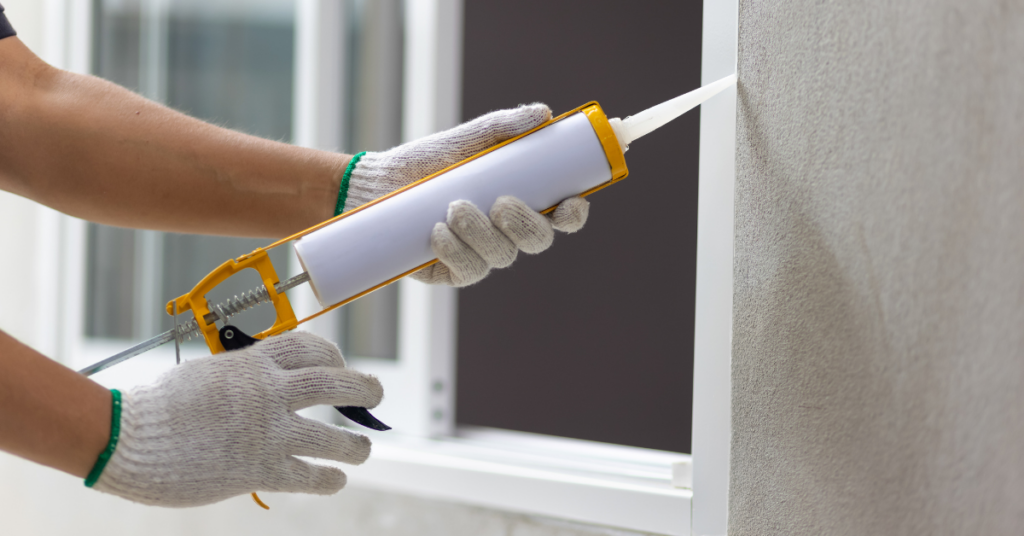The Best Caulking to Use for Stucco

This post was updated on September 30, 2025, to give you the most current information.
First impressions are often everything. Whether it’s a job interviewee putting their best foot forward or a building drawing in buyers or customers, there’s a lot of interest that needs to be piqued upon first sight. Caulking for stucco, as minor a detail it may seem to some, plays a huge role in that first impression.
When you’re planning a building renovation (or full construction, for that matter), several big decisions need to be made that play into each other. While the stucco itself is what people may notice before the smaller details, it’s the stucco caulking that will help a building maintain that attractive look.
So before you jump into construction, take a seat and consider all the different kinds of stucco caulking you could potentially use. Several things should be considered, from the materials it will be interacting with to the visuals.
The Different Types of Caulking for Stucco
Acrylic-Based
This is a water-based caulking for stucco that’s usually marketed as a “painter’s caulk” or “latex caulk.” Easy application and clean-up makes it a popular choice for DIY repairs (that doesn’t mean it has no place in a professional setting, though).
Strengths
- Various colors are available, making it easy to match the color of stucco you’re working with
- Easily smoothed, allowing for seamless surface blending
- Fast drying and curing time
- Widely available and budget-friendly
- Minimal odor
Weaknesses
- Tends to shrink and crack in areas that experience a lot of movement
- Less resistant to extreme weather than other options
- Relatively short lifespan, necessitating reapplication/repairs
Polyurethane
This stucco caulking is solvent-based and highly flexible. As a result, it creates a strong bond to various building materials. Many professionals prefer this caulking for stucco because of its watertight qualities and durability.
Strengths
- Great adhesive qualities to many building materials: concrete, wood, glass, metal, and, of course, stucco
- Flexible and crack-resistant, even with thermal expansion and contraction thrown into the equation
- Highly durable and long lasting
- Water-tight and weather-resistant
- Can be painted after curing (although some options require primer)
Weaknesses
- Comparatively messy application
- Can experience discoloration when left unpainted
- Long curing time
- Higher price tag than some other options
Silicone
Synthetic rubber is used to create this calking. Generally, this is a great option when you need to prioritize waterproofing and flexibility. It’s often used in bathrooms, kitchens, and other areas that expect moisture. When working with stucco, however, it may not be ideal.
Strengths
- Great flexibility and elasticity, even under significant temperature fluctuations
- Long lifespan and great waterproofing capabilities
- Mold and mildew resistant
- UV resistant
Weaknesses
- Not ideal if you want to paint over it
- Clean application is difficult
- Difficult to blend with textured stucco
- Easily attracts dirt
Rubberized
Also known as elastomeric caulk, this is a rubber-based sealant designed with the outdoors in mind. It expands and contracts with the building, meaning it’s a great choice when you’re working with stucco.
Strengths
- Top-tier flexibility, making it ideal when used in areas that see frequent movement
- Highly UV-resistant
- Provides strong protection against water intrusion
- Very long lifespan compared to acrylic counterparts
- Adheres exceptionally well to stucco
Weaknesses
- Thicker than other options, and generally more difficult to apply
- Generally more expensive than other options (though we consider it worth the price)
- Limited range of color options
- Longer curing times are required
What to Consider When Choosing the Best Caulk for Stucco
Those are the four primary kinds of caulk you can choose from, but even more abundant are the factors to consider when making your selection. As stated above, each option has differing characteristics, meaning the best caulk for stucco depends on a few different things.
- Climate/Exposure: If your area experiences a wide range of temperatures, consider prioritizing flexibility. For reference, here is climate guidance for Maryland and surrounding areas.
- Substrate Materials Being Joined: If the stucco you’re working with joins with wood, glass, metal, or other siding, it’s important to choose a stucco that’s compatible with these materials.
- Finish/Texture Matching: You likely want the caulks to blend in when working with visible surfaces. If your stucco is smooth, it’s relatively easy to find a stucco that matches. Textured stucco is possible, but more difficult.
- Paintability: If your intent is to paint the caulking to match the stucco, make sure you choose an option that allows for it. Make the wrong choice, and you’ll have to contend with discoloration or separation.
- Curing Time/Waiting Periods: Make sure the stucco cures for long enough before you apply caulk. Otherwise, uncured stucco can release lime and other compounds that interfere with adhesion. Also consider that different materials have different drying rates.
- Ease of Application/Tools: Tools and skill are both required to apply caulking. If applying it yourself, ease of application may be the best option. If not, we’re always happy to take on the project!
- Maintenance and Longevity: Even the best caulk-options degrade over time due to UV rays, moisture, and movement. That said, better materials last longer, reducing the need for frequent maintenance.
Robey Knows the Right Caulking for Stucco
Still not sure how to select the best caulk for stucco? That’s alright! Sometimes a professional touch is needed, and we’re more than happy to take on the task. At Robey, we have decades of experience under our belts. Why not utilize that experience to ensure expertise in your project? Get in touch with us and we’ll get the ball rolling!
